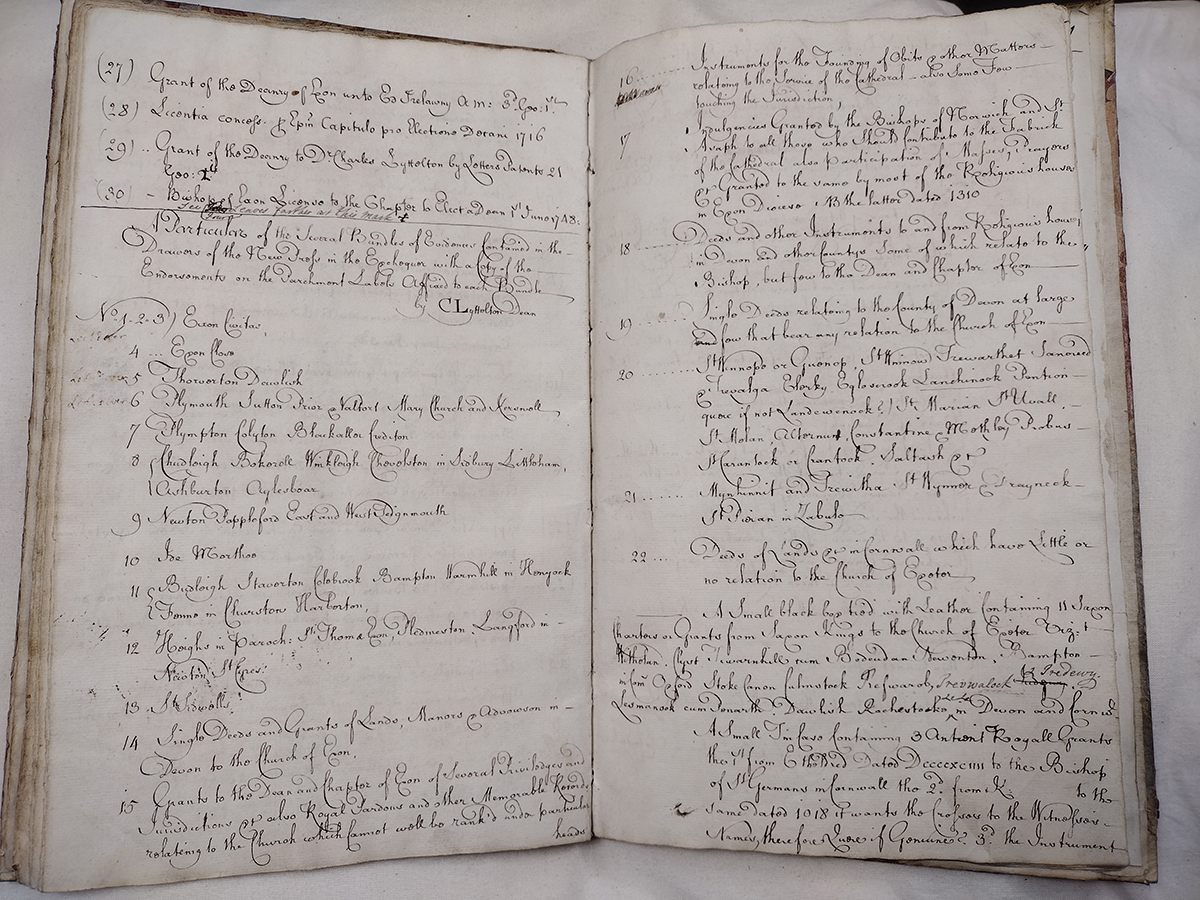 By Ellie Jones, Cathedral Archivist
By Ellie Jones, Cathedral Archivist
Hampers, baskets and drawers were the storage containers of choice for the Cathedral’s archives in the past, before neat rows of acid-free conservation grade cardboard boxes, a climate-controlled strongroom, and digital storage could have been imagined. For centuries the archives – variously called muniments or evidences – were stored in the exchequer room along with many of the treasures of the Cathedral. Various attempts had been made to list the documents hamper by hamper – but this did not always make it easy for people to actually find particular documents.
In the 1750s the Dean, Charles Lyttelton, got involved in organising things. Improvements were made to storage, organisation and cataloguing. Lyttelton himself went through many of the documents and recorded the ‘particulars of the several bundles of evidences contained in the drawers of the New Press in the Exchequer, with a copy of the endorsement on the parchment labels affixed to each bundle’. He added a note to the new catalogue, which incorporated and aimed to improve on a list made by the chapter clerk, Nicholas Webber, a hundred years earlier. It is hard to discern much order in Webber’s list except for the contents of drawers allocated individually to the Chancellor, Chanter, Treasury, Sub-deanery and Dean. Lyttelton’s innovation seems to have been an attempt at sorting the documents:
“In order to render the evidences more usefull, those sorted by Webber should be incorporated with those sorted by the Dean as the latter are placed in a series as far as was possible, with respect to Place, Matter & the like; whereas the former are jumbled together without any order, so that the whole catalogue must be read over before any one particular evidence can be found…”.
Only a few items are described individually, and instead the catalogue organises documents into numbered sections by place (Exeter city, the Close, then across Devon and Cornwall) and type. Inevitably there are some miscellaneous items left over, such as section 22, which contains “Deeds of Lands etc in Cornwall which have little or no relation to the Church of Exeter”. We can also see that some documents were given particular status and stored separately. There was a “small black box tied with leather containing 11 Saxon Charters or Grants from Saxon Kings to the Church of Exeter” and the Exeter Domesday is singled out as being a “most valuable manuscript”.
The arrangement of the Cathedral Archives continued along broadly similar lines for many years, but has had to adapt to accommodate thousands of further documents. Storage conditions have improved, and cataloguing has advanced, but the process of carefully sorting, storing and describing everything remains ongoing.